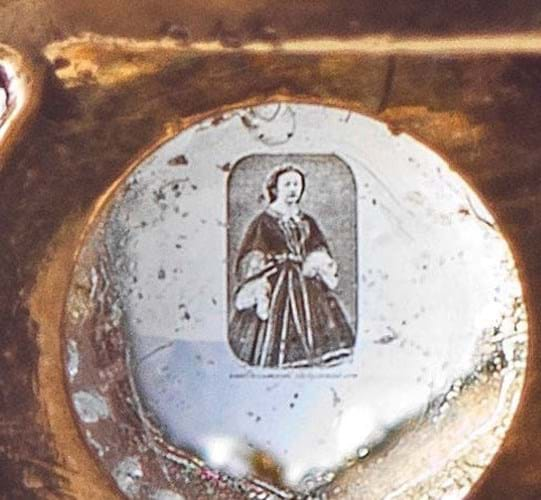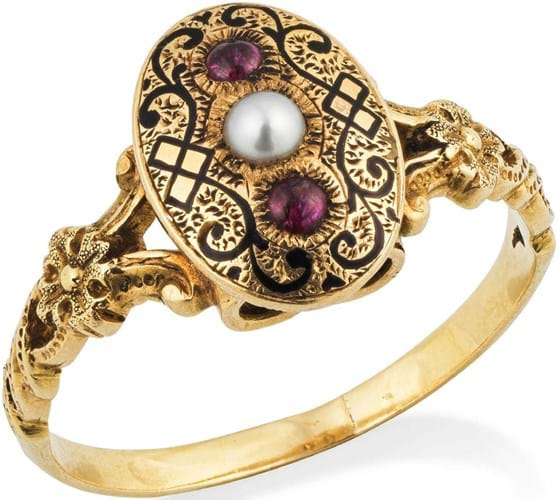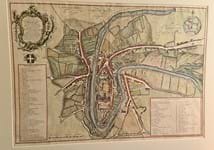
The gold ring showing French portrait photographer René Dagron’s invention of microphotography sold for €2800 (£2420).
The c.1860 oval ring, set with a cultured pearl and rubies around a microphotography image of a woman, was hammered down at €2800 (£2420) against an estimate of €500-700 (€3584 including buyer’s premium) to a private French buyer at the May 24 sale.
Dagron developed the technique of ‘microphotography’: attaching small images to a miniature magnifying convex lens within jewellery, novelties and souvenirs which became known as Bijoux Photomicroscopiques.
His invention became a popular kind of parlour game commonly referred to as Stanhopes because they used a modified Stanhope lens to view the microscopic picture within the jewellery.
In 1862, Dagron exhibited his miniature Stanhope viewers during London’s International Fair and received an honourable mention from Queen Victoria whom he supplied with a set of microfilms.
The consignors of the ring at Bonhams, a private family who had owned the jewel for generations, also sold a second lot by Dagron. A group of his works, comprising three watch keys and a pendant with images showing a man and a woman, were sold at €1700.

A detail showing the image of a woman.
Dagron continued to work in microphotography and by the late 1860s had developed his idea of miniature photographs to help the French in the Franco-Prussian War. He converted messages and documents into hidden miniature photographs that were sent by carrier pigeon across enemy lines. By the end of the war in 1871, Dagron had organised the sending of 115,000 messages.















